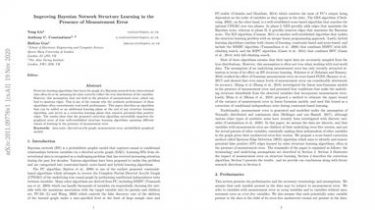Improving Bayesian Network Structure Learning in the Presence of Measurement Error

Structure learning algorithms that learn the graph of a Bayesian network from observational data often do so by assuming the data correctly reflect the true distribution of the variables. However, this assumption does not hold in the presence of measurement error, which can lead to spurious edges...
This is one of the reasons why the synthetic performance of these algorithms often overestimates real-world performance. This paper describes an algorithm that can be added as an additional learning phase at the end of any structure learning algorithm, and serves as a correction learning phase that removes potential